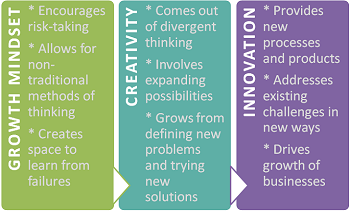Entrepreneurship plays a crucial role in driving innovation and economic growth. As individuals and teams introduce new products to the market, they often catalyze growth in surrounding industries and companies. This phenomenon has significant implications for the economy, employment, and competitive dynamics across sectors. Understanding how the development of new products by entrepreneurs positively impacts other companies provides valuable insights for stakeholders, policymakers, and aspiring entrepreneurs alike.
How do new product developments by entrepreneurs lead to growth in other companies?
Innovative products often stimulate consumer interest, leading to increased demand not only for the products themselves but also for complementary goods and services. As these products gain market traction, other companies can benefit from the boosted economic activity, resulting in job creation, enhanced supply chains, and collaborative opportunities.
The Importance of New Product Development
Entrepreneurs invest considerable time and resources into developing new products. This investment often leads to breakthroughs that can transform market dynamics. According to a recent report by the U.S. Small Business Administration, small businesses employing fewer than 500 workers account for approximately 47% of the private workforce. This statistic underscores the importance of sustained innovation within small companies.
Consider the following statistics highlighting the relationship between new products and economic impacts:
| Metric | Data |
|---|---|
| Percentage of GDP from Small Businesses | 44% |
| Job Creation by Small Businesses | 1.9 million annually |
| New Products from Small Firms | 30% of all patents |
As entrepreneurs launch innovative products, they contribute significantly to the economy. The direct benefits manifest through increased sales, enhanced market competitiveness, and a ripple effect across related industries.
The Ripple Effect of Innovation
Innovation is contagious. New products often create trends that inspire other companies to adapt and evolve. For instance, the rise of electric vehicles (EVs) has spurred growth in battery technology firms, charging infrastructure providers, and sustainable materials suppliers. As highlighted in a report by McKinsey & Company, the EV market alone is expected to generate over $600 billion by 2030, creating numerous opportunities across various sectors.
As entrepreneurs develop new technology, existing companies can pivot to meet the changing demands. This interplay fosters an environment of collaboration and competition that contributes to overall economic health.
Case Studies in Collaborative Growth
Several notable case studies illustrate this dynamic. One such example is the rise of the smartphone industry. The launch of the Apple iPhone in 2007 not only revolutionized how consumers interact with technology but also stimulated growth across multiple sectors, including app development, accessories manufacturing, and mobile advertising.
| Company | Impact of iPhone Launch |
|---|---|
| App Developers | Generated over $170 billion in revenue by 2021 |
| Accessory Brands | Sales increased by 25% annually post-launch |
| Mobile Advertisers | Estimated $80 billion in ad revenue in 2021 |
The smartphone ecosystem exemplifies how a single innovative product can generate extensive opportunities for other businesses.
Enhancing Supply Chains
As entrepreneurs introduce new products, they often require new suppliers and partners to scale production. This need enhances supply chain dynamics, encouraging diversification and resilience. For example, when Tesla expanded its production capabilities, it led to increased demand for suppliers of raw materials like lithium for batteries and components like semiconductor chips.
Businesses that adapt to support these new innovations benefit from increased revenue and stability. A 2022 study by Deloitte noted that companies with strong ties to innovative firms reported a 20% higher growth rate than those that didn’t.
Challenges and Opportunities
Despite the benefits associated with new product development, challenges persist. Entrepreneurs often face hurdles such as market saturation, regulatory compliance, and funding limitations. Addressing these obstacles requires collaboration among businesses, investors, and policymakers to create a supportive ecosystem.
The COVID-19 pandemic accelerated innovation in many sectors, leading to the development of health-related technology and remote working solutions. This shift has created opportunities for growth across various industries, including telehealth services, remote collaboration tools, and e-commerce platforms.

Future Trends
Looking ahead, several trends promise to shape the growth dynamics as entrepreneurs introduce new products:
- Sustainability Focus: As consumer awareness regarding environmental issues rises, companies that innovate sustainably gain competitive advantages. This trend will push other businesses to adopt sustainable practices to remain relevant.
- Digital Transformation: The ongoing digital shift means companies that develop new technologies can enhance existing services, thereby improving customer experiences.
- Collaboration Over Competition: Increased emphasis on partnerships will enable companies to co-develop products, sharing resources and expertise for mutual benefit.
Conclusion
Entrepreneurs developing new products do more than create innovative solutions; they drive growth across their entire ecosystem. The interplay between their innovations and the strategies of other companies fosters robust economic development. Policymakers and business leaders must recognize this dynamic, supporting entrepreneurship for broader economic health.
Investing in research, development, and collaboration can create a conducive atmosphere for innovation. As the economy continues to evolve, the ripple effects of entrepreneurial ventures will remain critical to understanding how growth manifests in the broader market landscape. Understanding and harnessing this potential will empower companies to thrive through innovation, collaboration, and adaptability.
